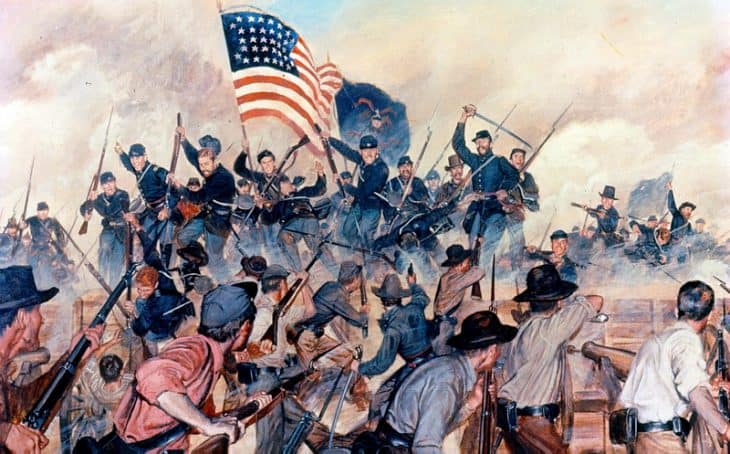
- Official Name: American Civil War
- Dates: April 12, 1861 – May 9, 1865 (by declaration)
- Duration: 4 years, 3 weeks and 6 days
- Locations: Southern US, Northeastern US, Western US, and the Atlantic Ocean
- Victory: Union
- Casualties: Estimated 625,000-850,000 dead
- Average Age: 25.8 for Union soldiers, no definite information for Confederate soldiers
- Belligerents: United States and Confederate States
- Books: Battle Cry of Freedom, A Stillness at Appomattox, The Killer Angels
- Generals: Robert E. Lee, Stonewall Jackson, Ulysess S. Grant, William Tecumseh Sherman
- First Battle: The First Battle of the Civil War Is Difficult to Determine
- History: The Secession of the Southern States Was Determined Unconstitutional by the Supreme Court
- Bloodiest Battle: The Battle of Gettysburg Was the Bloodiest Battle of the Civil War
- Causes: Slavery Was One of the Most Important Causes of the Civil War
- Battles: There Were Nearly 10,500 Battles in the American Civil War
- Battles: The Civil War Battles Were Usually Named after Geographical Features in the Area
- Locations: The Civil War Began in South Carolina and Ended in Virginia
- Effects: The Abolishment of Slavery Is One of the Most Important Results of the Civil War
- Death: The Assassination of Abraham Lincoln Was a Part of the Civil War
- Casualties: A Large Proportion of Civil War Deaths Were as a Result of Disease
- Women Had an Important Role in the American Civil War
- The Civil War Is Considered the First Modern War
- More Men Died during the American Civil War than in Any Other American Conflict
- The Civil War Was Also Fought at Sea
- The Union Army Was Surprisingly Multi-Cultural
- Black Union Soldiers Were Paid a Lot Less than White Union Soldiers
- Robert E. Lee Is Considered the Bloodiest General of the Civil War
- Civil War Soldiers Were Often Buried on the Battlefield after They Fell
- The Civil War Is a War of Many Names
- Civil War Soldiers Often Used Books instead of Toilet Paper
The First Battle of the Civil War Is Difficult to Determine
Civil War facts show that the first battle of the great American war is difficult to determine and remains a debate among historians to this very day. The most common choices for the first battle of the Civil War are generally the First Battle of Bull Run (known also as the First Manassas by the Confederate side) or the Battle of Fort Sumter.
The Battle of Fort Sumter was actually the first battle chronologically, but it only involved bombarding, not an actual man-to-man battle. The First Battle of Bull Run was indeed the first major battle of the four-year-long conflict, but it was preceded by more than a month by the Battle of Philippi, which is sometimes considered only a skirmish and not a real battle, although over 4,000 men were involved.
The Secession of the Southern States Was Determined Unconstitutional by the Supreme Court
Prior to the actual start of the Civil War, 11 states seceded from the Union, starting with South Carolina in December 1860, Mississippi, Florida, Alabama, Georgia and Louisiana in January 1861, Texas in February 1861 and the last four states (Virginia, Arkansas, North Carolina and Tennessee) between April and June 1861. Although the Union eventually won the war and dispelled the new-founded Confederation, many Civil War facts deal with the question of whether the secession was legal in the first place.
The answer is no, although it was ruled illegal only after the war. The United States Supreme Court, in Texas v. White, ruled that secession was unconstitutional in 1869. Chief Justice Salmon Chase explained, “The ordinance of secession…and all the acts of legislature intended to give effect to that ordinance, were absolutely null. They were utterly without operation in law.”
The Battle of Gettysburg Was the Bloodiest Battle of the Civil War
The Battle of Gettysburg is one of the most famous battles of the Civil War, but Civil War facts unfortunately reveal also that is was the bloodiest battle of them all (when taking the total number of casualties into account).
After 3 days of battle between July 1 and July 3, 1863, 51,000 individuals of both sides were killed, wounded, captured or missing. This battle is not only memorable by the number of its casualties, but also because it was the turning point in the war – the Confederate Army under the leadership of General Robert E. Lee suffered its first major loss in the war at Gettysburg, giving the Union a chance of winning the war. Although the war lasted for an additional two years after the battle, it is considered by many to be the turning point of the war.
The second bloodiest battle was the Battle of Chickamauga in September 1963, claiming over 34,000 casualties. And the bloodiest one-day battle in the Civil War? The Battle of Sharpsburg in September 1862 with more than 22,000 casualties.
Slavery Was One of the Most Important Causes of the Civil War
Civil War facts show that the causes for the war were many and complex, and also controversial during the war itself, further complicated by historical revisionists who always search for new answers and explanations.
The simple truth is that slavery was the central reason for tensions among the states and the Republican Party was determined to put an end to slavery.
When Abraham Lincoln won the 1860 Presidential election for the Republicans without winning in a single Southern state, the South felt alienated and saw secession as their only option. Secession intensified the tensions and eventually led to the war.
There Were Nearly 10,500 Battles in the American Civil War
Civil War facts demonstrate the almost unbelievable battle statistics of the Civil War – nearly 10,500 battles were fought in total, with nearly 50 major battles and approximately 100 others that were of major importance to the end result. But that is only the fighting which is considered an actual battle; there were many other skirmishes, naval engagements, sieges, bombardments and similar.
All in all, the war was fought in 23 different states (most battles took place in Virginia) and resulted in over 650,000 casualties. The following battles are most often considered to be the most significant: the Battle of First Bull Run, the Battle of Shiloh, the Battle of Antietam (also known as the Battle of Sharpsburg), the Battle of Vicksburg, the Seven Days Campaign, the Battle of Gettysburg, the Battle of Chattanooga and the Battle of Fort Sumter.
The Civil War Battles Were Usually Named after Geographical Features in the Area
The naming of battles in the Civil War is sometimes complicated by some battles having two names – one given by the Union and one given by the Confederacy. The Union usually named their battles after bodies of water (rivers, creeks and similar) or other significant geographical features on or near the battlefield.
On the other hand, the Confederacy named their battles after nearby towns, settlements or other manmade landmarks. Two of the most famous battles of the Civil War were the Battle of Antietam for Northerners (the Battle of Sharpsburg for Southerners) and the First Battle of Bull Run for Northerners (the First Manassas for Southerners).
The Civil War Began in South Carolina and Ended in Virginia
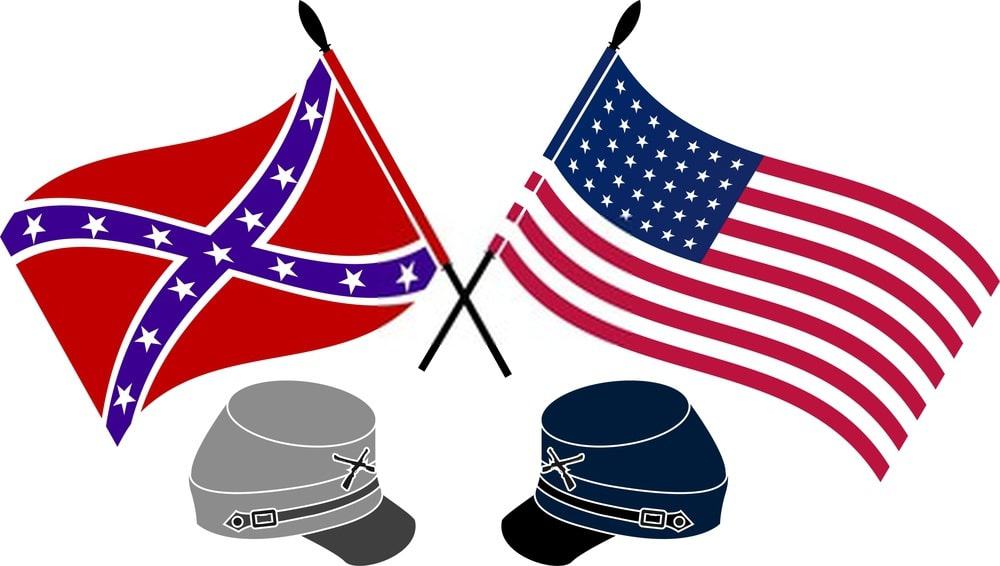
The greatest conflict in history on American soil began in South Carolina on April 12, 1861 when Confederate shore batteries under the leadership of General P.G.T. Beauregard started firing on the Union-held Fort Sumter in Charleston Harbor.
The official end of the war is usually cited as being almost exactly four years later, on April 8, 1865 when the Confederate General Robert E. Lee surrendered his army at the McLean House in the village of Appomattox Court House in Virginia. Although there were some minor battles and skirmishes after this date, it is generally considered as the official end of war.
The Abolishment of Slavery Is One of the Most Important Results of the Civil War
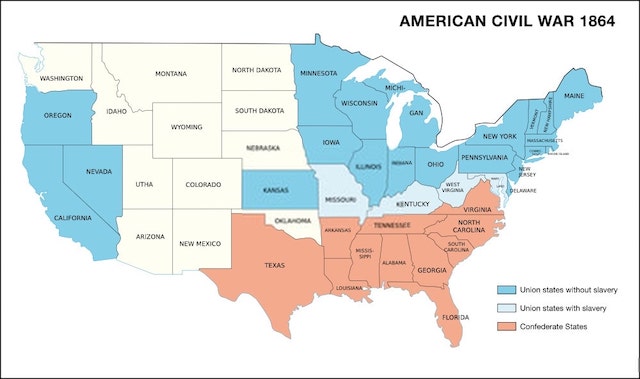
Slavery was one of the most important reasons why the war even started in the first place, so it seems reasonable to call the abolishment of slavery the most important result of the Civil War.
There were, however, many other consequences of the war too – both positive and negative: the reinforcement of the concept of “One America” with the Union and the Confederation dissolved, the preservation of territorial integrity, the assassination of President Abraham Lincoln (just three days after General Lee’s surrender), the beginning of the Reconstruction Era and the establishment of the Ku Klux Klan, the extremist group that advocates white supremacy, extreme nationalism and anti-immigration politics, whose third reincarnation (the Third KKK) is still active today.
The Assassination of Abraham Lincoln Was a Part of the Civil War
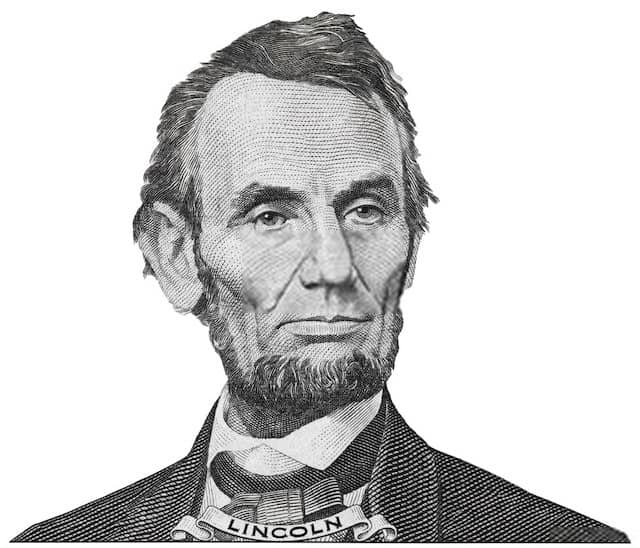
Just three days after General Lee surrendered his forces to the Union in Virginia, on the evening of April 14, 1865, John Wilkes Booth, a pro-slavery Confederate sympathiser, shot President Lincoln in the head as the President was watching a play at the Ford’s Theatre in Washington. Lincoln died the next morning and Civil War facts reveal that he had premonitions about his death and expected something to happen.
Although the leader of the Union was assassinated, this couldn’t change the fact that the Union had won the war. Lincoln’s efforts were continued by Andrew Johnson, his Vice President, who succeeded him in office after the assassination, and their collaborators who guided the USA through the demanding Reconstruction Era that followed the Civil War.
A Large Proportion of Civil War Deaths Were as a Result of Disease
Civil War facts statistics show that of the more than 650,000 people that died in the Civil War, two-thirds of them didn’t die directly as a result of battling, but died of various diseases. Medicine of the time was far from what it is today, and there were no effective antiseptics, which could have greatly reduced the spread of disease.
George Worthington Adams, the author of the book “Doctors in Blue: the Medical History of the Union Army in the Civil War” has said, “The Civil War was fought in the very last years of the medical middle ages.” Considering that doctors of the time used chloroform, ether or whisky as the main aesthetics, he must have been right in saying that. Had medicine been more advanced then, there would have been far fewer casualties in the Civil War.
Women Had an Important Role in the American Civil War
Women legally had no right to fight in the war, but many disguised themselves as men to be able to participate. It is estimated that 400-800 women fought in the Civil War. Their motivation? The same as the motivation of men: ardent patriotism, promise of reliable wages, desire for adventure or sharing the experience with their loved ones.
But women who didn’t fight in the war carried out many other important duties that supported the men who fought – a lot of women served as nurses or spies. Some of the most famous women involved in or connected to the Civil War were Harriet Beecher Stowe, the author of Uncle Tom’s Cabin – a book which exposed the harshness of slavery to the North – Harriet Tubman, an escaped slave who worked as a spy for the Union, and Clara Barton, a nurse who established the American Red Cross.
The Civil War Is Considered the First Modern War
Civil War facts reveal that the American Civil War is considered to be the first modern war in human history, since many advanced warfare machinery and techniques were used for the first time.
This advanced warfare included the use of mines, rapid fire weapons, rifles, submarines, railroads, ironclad ships, aerial observation and also telegraphs and telecommunication for military intelligence.
The Civil War was also the first true industrial war – a war where industry was widely used for the war effort, with civilian factories, shipyards, banks and transportation companies all playing an important role in the war.
More Men Died during the American Civil War than in Any Other American Conflict
Approximately 650,000 people died in the Civil War, making it the bloodiest conflict on American soil in the country’s history. More Americans died in the Civil War than in World War I, World War II, the Korean War and the Vietnam War combined. All in all, 2 % of the population died – equivalent to 6 million men (and women) today.
Rifles were the deadliest weapons of the war, but the majority of men still died of disease such as malaria, mumps, chicken pox, measles and other epidemics that rapidly spread through unhygienic camps.
The Civil War Was Also Fought at Sea
Many people are not aware of the fact that the Civil War was also fought at sea. Civil War facts show that the war was fought on the Atlantic Ocean, in the Gulf of Mexico and many rivers of the mainland. Gunboats, shore batteries and ironclad ships had an important impact on the way the war was fought and also shaped the way many future wars were fought.
The U.S. Navy, under the control of the Union government, was small at the beginning of the war, but rapidly grew in the following years, reaching 6,000 officers, 45,000 men and nearly 700 vessels by 1865. Its main purpose was to block the Confederate ports and consequently weaken their economy and ability to provide soldiers with basic necessities.
The Union Army Was Surprisingly Multi-Cultural
It is estimated that the Union Army’s strength surpassed 2,000,000 men over the total duration of the war, including many foreign soldiers that made the Union Army a true multi-cultural force. By some estimates, 7.5% of soldiers were Irish and 10% German.
In addition, there were many immigrant soldiers from France, Italy, Poland, England and Scotland. On average, foreigners were the majority in one in four regiments. From 1863, black soldiers were also permitted to join the Union army (about 1 in 10 soldiers was African-American) – a decision that might have won the war for the Union in the end…
Black Union Soldiers Were Paid a Lot Less than White Union Soldiers

Although the main purpose of the Union was to unite the USA and end slavery, black soldiers received much smaller wages than white Union soldiers. In 1863, when blacks were first allowed to join the Union army, they were paid $10 per month with a deducted fee of $3 for clothing. White soldiers were paid at least $13 per month and were not required to pay any clothes fee.
But black Union soldiers were not ready to suffer this inequality any further; they rebelled and protested by refusing their salaries for 18 months, and Congress, pressured by abolitionist congressmen, finally decided to improve the situation in September 1864 by paying fair wages to their black soldiers. For many of them this meant that they were able to send some money home to their families for the first time in their lives…
Robert E. Lee Is Considered the Bloodiest General of the Civil War
Although Mary Lincoln, the wife of President Abraham Lincoln, labeled the Union General Ulysses S. Grant a “butcher” (for the big losses his army suffered in the Overland Campaign in 1864), it is actually a general from the other side – the famous Robert E. Lee – who deserves the title of the bloodiest general of the Civil War. Losses in the Confederate army, when counted proportionally, were far greater than losses in the Union army, making General Robert E. Lee the real “butcher” of the war.
Civil War Soldiers Were Often Buried on the Battlefield after They Fell
The sheer number of casualties made it impossible to give all the fallen men a proper burial, so soldiers were typically buried right where they had fallen on the battlefield. Soldiers who died in hospitals were usually buried in the vicinity.
Some of the bodies were later exhumed and moved to National or Confederate cemeteries, but the sheer number of casualties again prevented burial of all the bodies in the proper way. There are without a doubt still thousands and thousands of soldiers from the Civil War resting in unknown battlefield graves across the country.
The Civil War Is a War of Many Names
Most people in the USA nowadays know the war under the name the Civil War, and people in other parts of the world most often refer to it as the American Civil War. In addition, the war has also had many different names in the past. Northerners have called it the War to Preserve the Union, the War of the Southern Rebellion (or just the War of Rebellion) or the War to Make Men Free.
Southerners have called it (and sometimes still do) the War Between the States or the War of Northern Aggression. There were also two more neutral terms popular at the time (for those who didn’t want to upset either side): the Late Unpleasantness and Mr. Lincoln’s War.
Civil War Soldiers Often Used Books instead of Toilet Paper
Civil War facts also reveal details of soldiers’ lives on the battlefields that are not directly connected to fighting. Did you know that Civil War soldiers used leaves, twigs, grass, corncobs and even books instead of toilet paper? Or that they mostly ate pork, beef, hardtack, cornmeal, molasses, rice and dried beans? Or that they spent the little free time that they had on fun activities such as gambling, smoking, chewing tobacco, singing, dancing, writing letters, playing cards and even baseball? Well, now you do…
Civil War Facts — Facts about the Civil War Summary
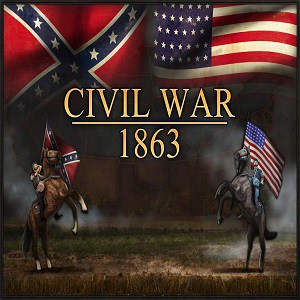 The Civil War (or the American Civil War as the outside world knows it) was the greatest ever conflict on American soil. It lasted from 1861 until 1865 and claimed more than 650,000 lives. The Northern states (known as the Union) wished to abolish the slavery and fought the Southern states (known as the Confederacy), which seceded from the USA just prior to the war. The most important consequence of the Civil War was the abolishment of slavery – the first step on the road to racial equality in the USA. President Abraham Lincoln, the leader of the Union during the war and one of the men responsible for the abolition of slavery in the USA, was assassinated only three days after Confederate General Robert E. Lee surrendered his army to the Union and effectively ended the war.
The Civil War (or the American Civil War as the outside world knows it) was the greatest ever conflict on American soil. It lasted from 1861 until 1865 and claimed more than 650,000 lives. The Northern states (known as the Union) wished to abolish the slavery and fought the Southern states (known as the Confederacy), which seceded from the USA just prior to the war. The most important consequence of the Civil War was the abolishment of slavery – the first step on the road to racial equality in the USA. President Abraham Lincoln, the leader of the Union during the war and one of the men responsible for the abolition of slavery in the USA, was assassinated only three days after Confederate General Robert E. Lee surrendered his army to the Union and effectively ended the war.




Was this page helpful?
Our commitment to delivering trustworthy and engaging content is at the heart of what we do. Each fact on our site is contributed by real users like you, bringing a wealth of diverse insights and information. To ensure the highest standards of accuracy and reliability, our dedicated editors meticulously review each submission. This process guarantees that the facts we share are not only fascinating but also credible. Trust in our commitment to quality and authenticity as you explore and learn with us.


